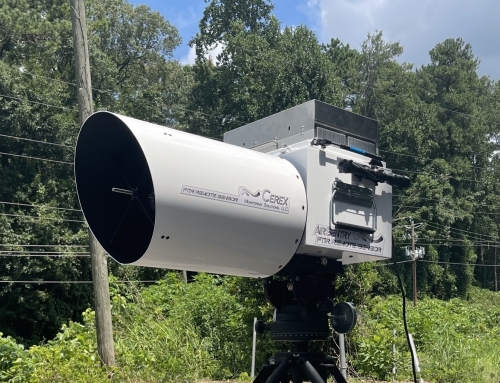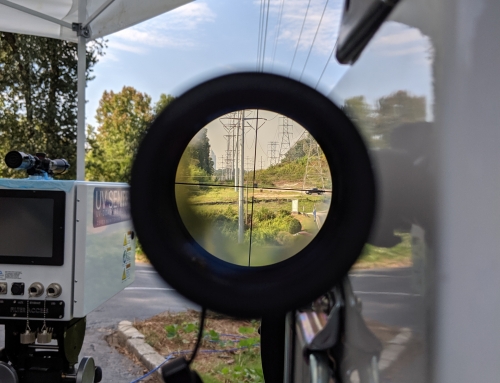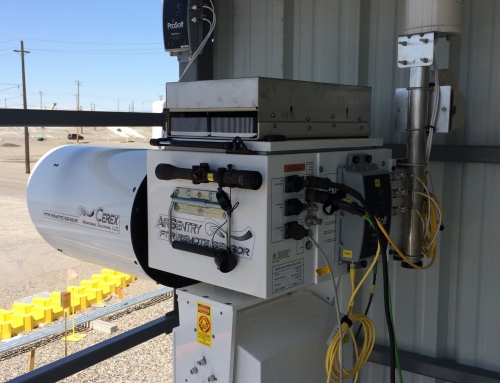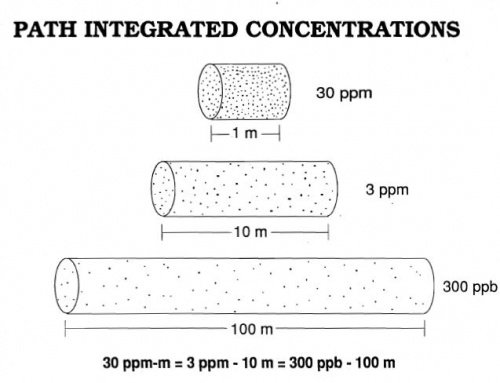Choosing a bulb type – Deuterium vs. Xenon
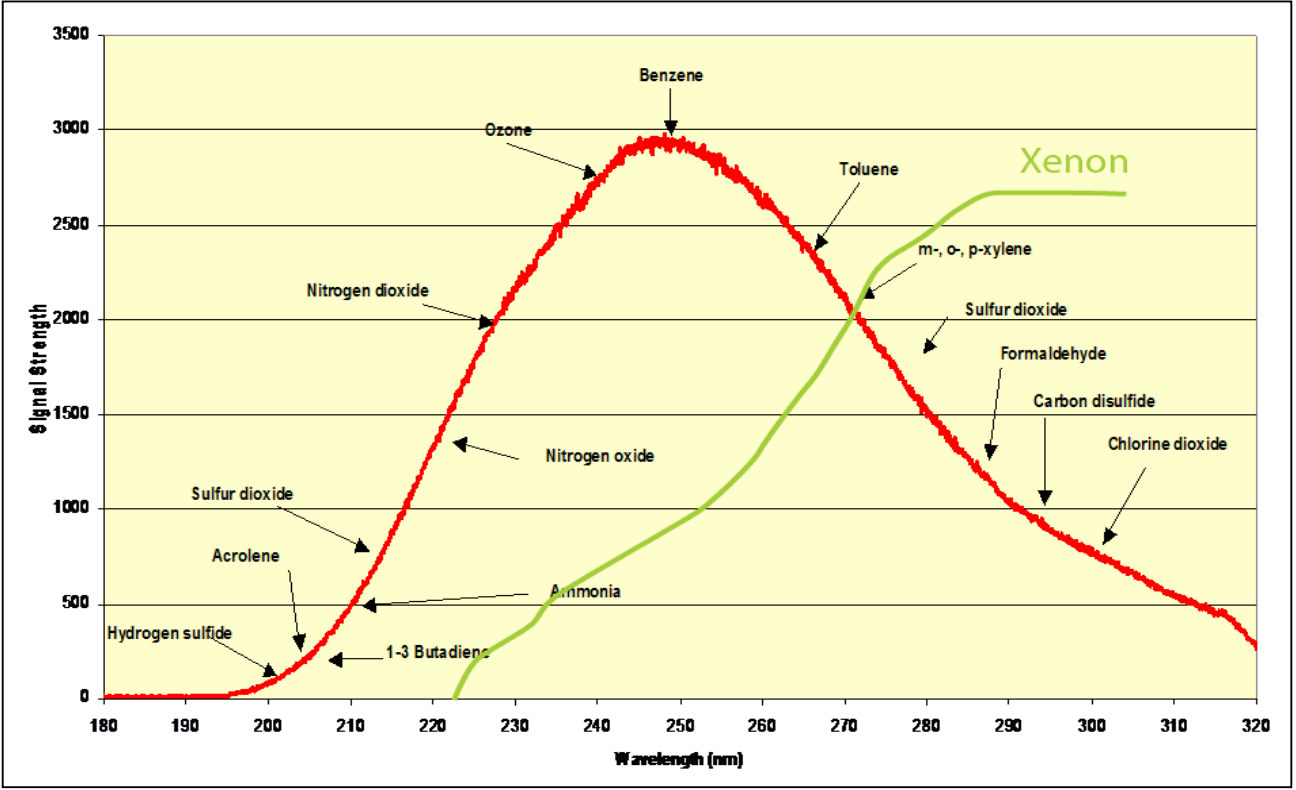
Each UV source bulb has a unique list of benefits and limitations. The spectral curves produced by each bulb can be seen in the chart above
All gas compounds absorb UV light energy at specific wavelengths. UV DOAS analyzers detect gas compounds found present in a reflected UV light beam. For a gas compound to be detected by a UV DOAS analyzer, there must be enough UV energy present at the wavelength’s point of absorption.
Cerex offers two UV bulb types – Deuterium and Xenon. The primary reason to select one bulb type over the other is to have sufficient energy for analysis for your compounds of interest.
Deuterium
- Monitor distances up to 225m in a mono-static configuration or 450m in a bi-static configuration
- More energy below 240nm
- Required to detect 1,3-Butadiene (C4H6), ammonia (NH3), nitric oxide (NO), and others
Xenon
- Measuring longer distances, 1km or more, with a single instrument
- Easier to align at longer distances due to the high visible component of light


